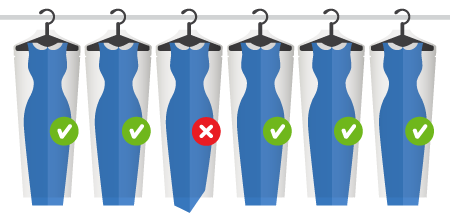Topics
Retail Assortments: What Are They and Are They Worth Using?

The concept of the assortment is simple enough – that a given brick and mortar store in the chain would only be “allowed” to stock and sell products assigned to the assortment of goods allocated to that particular door.
Why not just offer everything in every store? The reason is the need to possibly offer less than the full complement of products sold by the retailer overall at an individual location; for instance, a store with fewer square feet of selling space simply might not be able to contain every product offered at the “A” type major doors. Or, a given store’s geographic region might make certain products unsuitable for sale there; for instance, it’s unlikely that down coats and scarves would be viable sellers in a store located in the Florida panhandle, no matter what the season.
But wait, what is assortment? Many who work in retail are already familiar but for those of us that do not, a definition is needed. According to Investopedia, an assortment is a collection of goods or services that a business provides to a consumer. This concept usually deals with the number of products carried as well as the variety of products sold.
Keeping track of “what should be offered where” becomes a Herculean task when there are thousands of products and dozens of stores (or more), so in that sense setting up assortments made sense in their day. The question is, has that day started to ebb?
Consider today’s retail omnichannel environment, where online sales have grown by leaps and bounds, and how that relates to assortments:
- If a shopper buys something online and wants to pick it up at a local storefront, will that product be shippable to that store if it is not on any assortment assigned to that store?
- If a shopper purchased something online (and received it by direct delivery) and wants to return it, will she be rebuffed at the local store if that product is not listed on that particular store’s assortment?
- If store management recognizes the value of having physical presence at each store location and the potential advantage of using those stores as “mini-DCs” to use as ship points, will essentially every product need to be “assorted” to every store in order to accommodate the potential need to ship possibly anything offered from that store?
The above are issues that did not exist a decade ago, but seem almost inevitable given the way the Internet has altered the retail landscape. Furthermore, the so-called “endless aisle” concept of having an in-store kiosk to enable customers to shop for products that cannot be found on the local shelves adds to the complexity – what or how can certain products be restricted, when any product might be needed? It is almost as if the assortment is merely a starting point, but just because a store cannot physically hold stock of 12’ canoes does not mean a customer should not be able to pick one up in-store a day or two after ordering online… and if that canoe is not on the assortment assigned to that store how can the customer be satisfied?
Of course, needs differ among various types of retailers. Convenience stores must physically stock those products that shoppers will come in and buy on the spot, while a sporting goods retailer may not have room to stock every size of canoe and tent offered in a particular facility, but will want to make them available for later pickup to its clientele.
So the question becomes “how strict should the assortment be?” That is, if a product is not on any assortment assigned to a given physical store, should it completely preclude that product from being returned at or shippable to (for customer pickup service) that location? It seems obvious that the answer is no, yet today’s retail software still has that limitation.
It seems to me that software needs to allow for assortments as a way of sending initial products and replenishments to individual stores, but no longer limit a given store’s ability to handle product that it normally wouldn’t receive to sell off the shelf (or rack).

